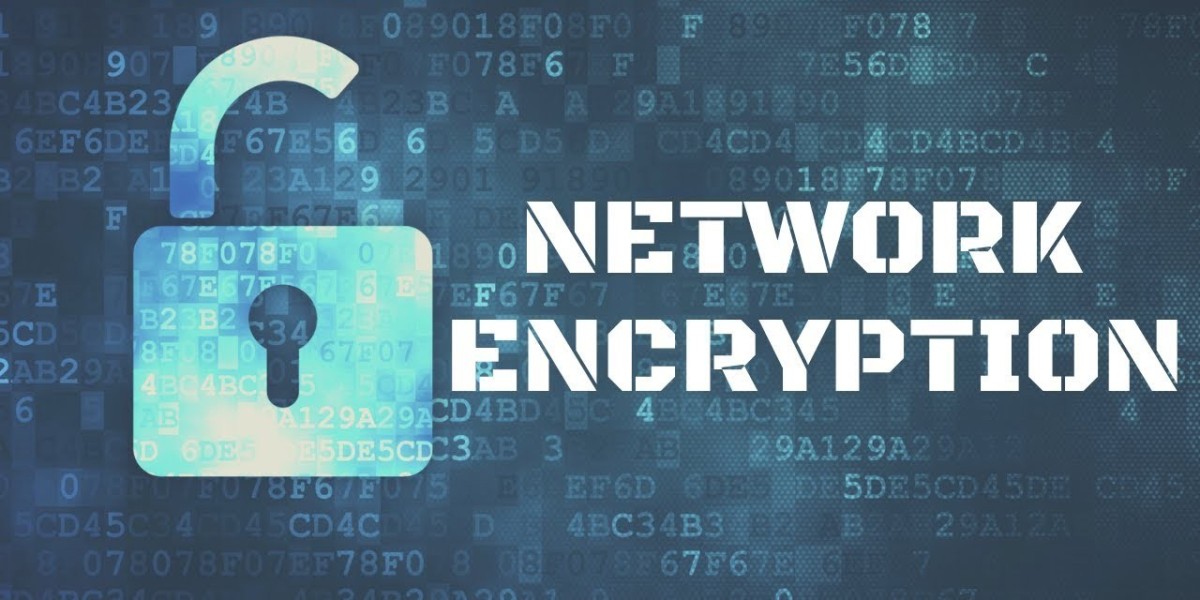Network encryption stands as a critical defense mechanism in the digital age, safeguarding sensitive communications amid escalating cyber threats and an expanding digital footprint. In 2025, innovations in post-quantum cryptography, AI-enhanced encryption analytics, and Zero Trust architectures are reshaping security paradigms to meet the demands of ultra-fast 5G networks, cloud computing, and hybrid workforces. As adversaries become more sophisticated, network encryption technologies evolve rapidly to protect data in transit across increasingly complex IT environments.
According to Straits Research, the global network encryption size was valued at USD 5.18 billion in 2024 and is projected to grow from USD 5.65 billion in 2025 to USD 11.25 billion by 2033, exhibiting a CAGR of 9% during the forecast period (2025-2033). This growth underscores the rising need for robust data protection frameworks as enterprises scale digital operations and regulatory pressures mount worldwide.
Emerging Technologies and Industry Innovations
The advent of quantum computing accelerates the transition toward post-quantum cryptography (PQC), designing encryption algorithms resilient to quantum-enabled attacks—shifting security foundations from classical RSA and ECC standards. The U.S. National Institute of Standards and Technology (NIST) recently finalized PQC standards, such as CRYSTALS-Kyber and CRYSTALS-Dilithium, guiding organizations to update cryptographic protocols to ensure future-proof secure communications.
Zero Trust Architecture (ZTA) gains momentum as organizations abandon perimeter-based security for continuous verification and granular encryption controls. In 2025, network encryption protocols seamlessly integrate within ZTA frameworks to enforce data confidentiality throughout hybrid and cloud environments. End-to-end encryption across all data lifecycles, device types, and geographies is paramount as remote work and BYOD policies prevail.
AI and machine learning embed deeply into network encryption systems, enabling anomaly detection in encrypted traffic, automated certificate lifecycle management, and predictive vulnerability identification. This AI infusion enhances threat response speed and accuracy, reducing manual intervention and strengthening defenses against stealthy cyber intrusions.
The growing 5G ecosystem challenges existing encryption methods with high bandwidth and low-latency demands. Innovations in lightweight, energy-efficient encryption hardware and software, sometimes embedded directly in 5G Open RAN radios, support secure, real-time communication for smart cities, autonomous vehicles, and mission-critical applications.
Key Industry Players and Competitive Landscape
Cisco Systems (USA): A dominant force offering broad network encryption solutions integrated with advanced threat intelligence and AI-driven automation.
Thales Group (France): Specializes in high-assurance encryption for sensitive government and defense networks and cutting-edge quantum-safe cryptographic tools.
Oracle Corporation (USA): Provides scalable encryption for cloud-native environments and big data workloads complemented by AI-powered security analytics.
Palo Alto Networks (USA): Innovating with integrated Zero Trust Network Access (ZTNA) and encrypted traffic analytics, addressing hybrid enterprise needs.
Quantum Xchange (USA): Pioneer in quantum key distribution (QKD) technology, enabling near-unbreakable encryption for ultra-secure communications.
Eridan Communications and Patero Technologies (USA): Collaborated on integrating post-quantum cryptography into 5G Open RAN infrastructure, advancing quantum-safe private networks.
Huawei Technologies (China): Launched AI-powered encrypted traffic identification solutions, optimizing ISP performance in highly encrypted environments.
Senetas Corporation (Australia): Leading provider of high-assurance hardware encryption for critical infrastructure sectors.
Regional and Country-Specific Updates
United States: The US government prioritizes quantum-resistant encryption rollout across federal networks, stimulating private sector adoption. Several pilot deployments target ports, campuses, and smart city infrastructures with fivefold energy efficiency improvements in encryption-enabled 5G radios.
Europe: Regulatory ecosystems like GDPR and increased law enforcement demands shape encryption innovation. Europol-backed operations revealed the dual role of encryption in both privacy protection and criminal investigations, driving investments in lawful interception-capable solutions.
Asia-Pacific: China leads with AI-powered encrypted traffic management and commercial deployments supporting burgeoning 5G infrastructure. Huawei’s Xinghe Intelligent Network solutions demonstrate 95% encrypted data identification accuracy, optimizing ISP networks while maintaining privacy.
Middle East and Africa: Growing digital economies are investing in network encryption, aligning with global compliance and regional cybersecurity frameworks.
Trends Accelerating Growth
Quantum-Resistant Encryption: Urgent upgrades to PQC standard algorithms prepare networks to withstand future quantum threats.
AI-Integrated Security: Automated threat detection and encryption management improve efficiency and resilience in encrypted communication monitoring.
Cloud-Native Encryption: Distributed architectures and software-defined encryption gain traction, enhancing flexibility and multi-cloud security.
5G Network Security: Enhanced protocols embedded in 5G infrastructures address high-speed, low-latency encryption without compromising performance.
Regulatory Compliance: Stringent data protection laws globally compel enterprises to elevate encryption standards to avoid penalties and protect customer trust.
Hybrid and Remote Workforces: Secure access models ensure data protection regardless of user location or device, supporting pervasive encryption adoption.
Recent News Highlights
In July 2025, Eridan and Patero Technologies achieved a breakthrough by integrating post-quantum cryptography into 5G Open RAN systems for secure, energy-efficient private networks targeting critical US infrastructure, including ports and smart campuses.
Europol-led multi-country operations in April 2025 saw 232 arrests linked to drug trafficking, citing breakthroughs in encrypted communication platform surveillance that aided cross-border law enforcement.
At the Huawei Network Summit 2025 in Hong Kong, the company unveiled AI-driven encrypted traffic identification solutions achieving 95% accuracy, reducing latency by over 65% and driving revenue growth for ISPs in the Asia-Pacific region.
Cisco expanded its AI-enabled network encryption portfolio in August 2025, targeting large enterprises and governmental clients with automated certificate management and adaptive threat response systems.












